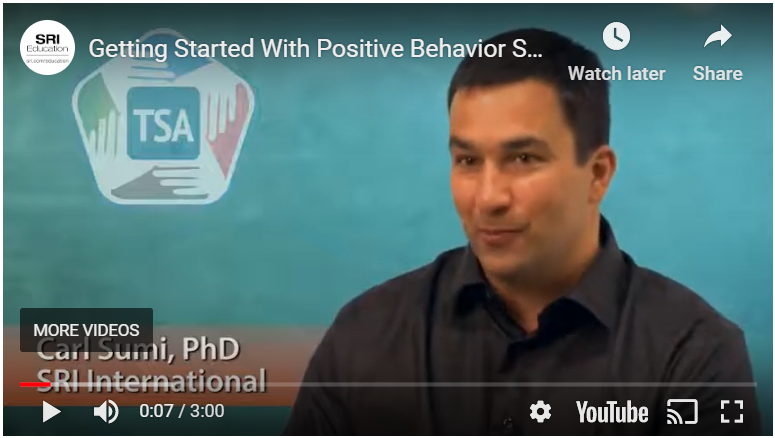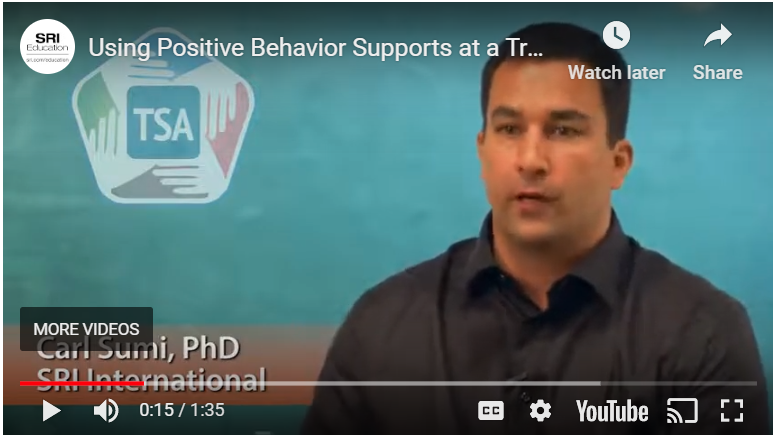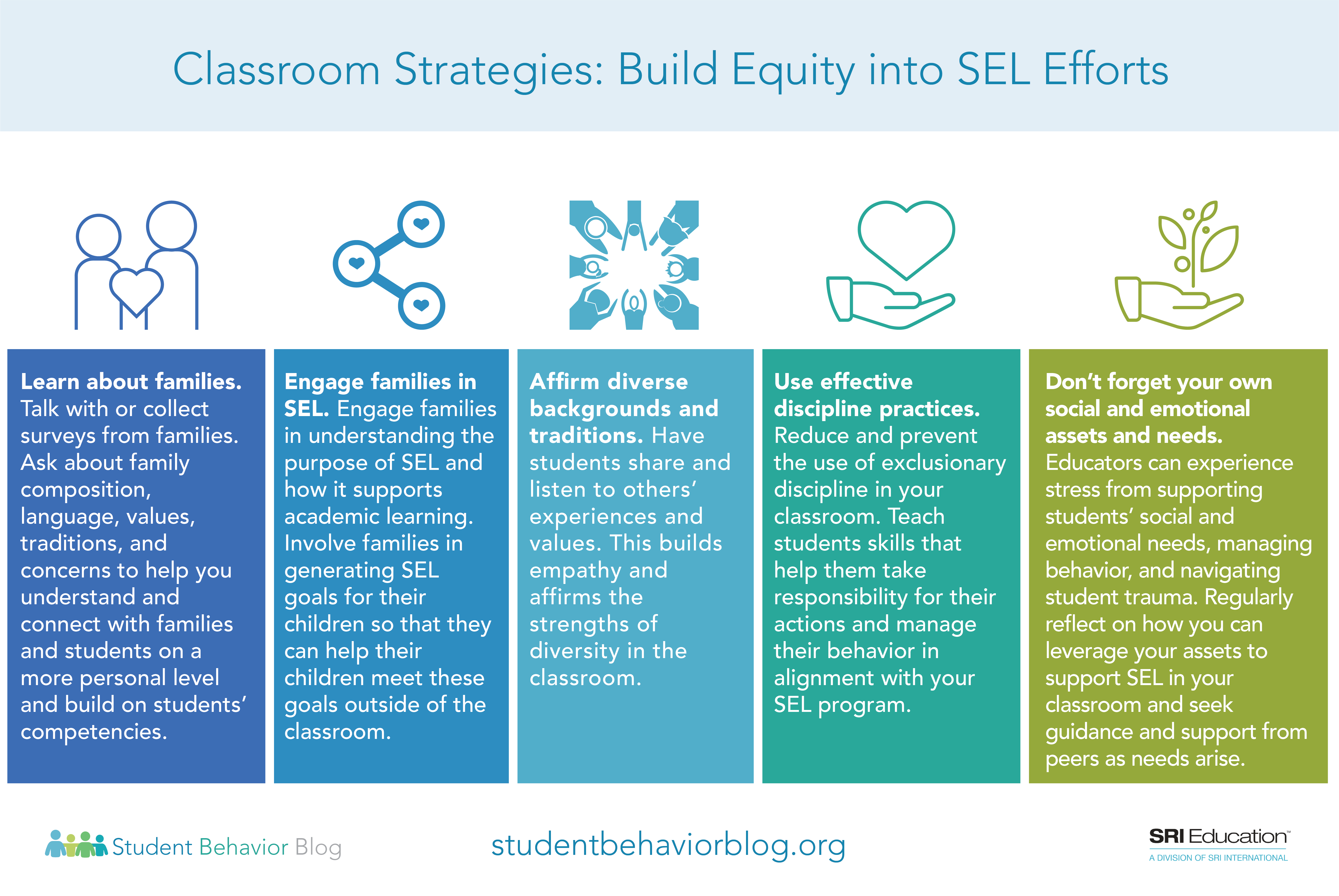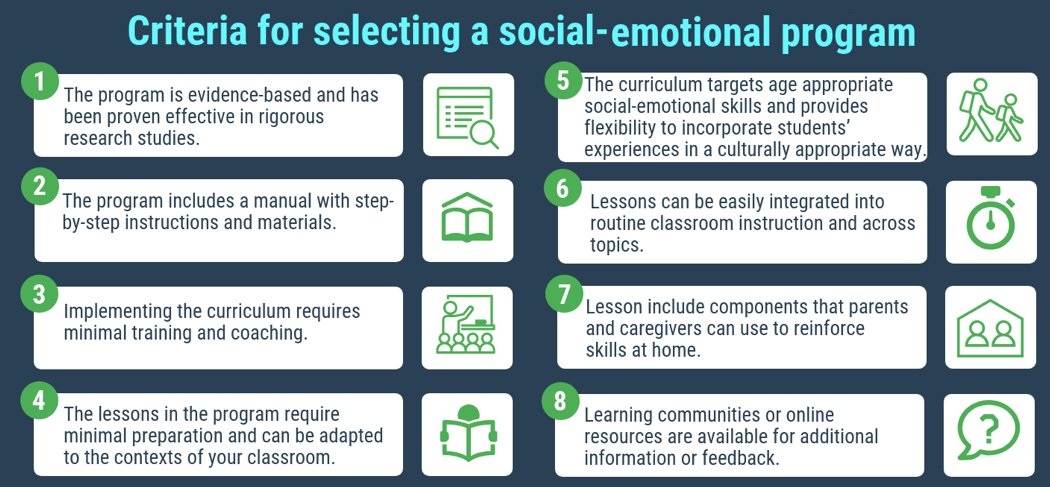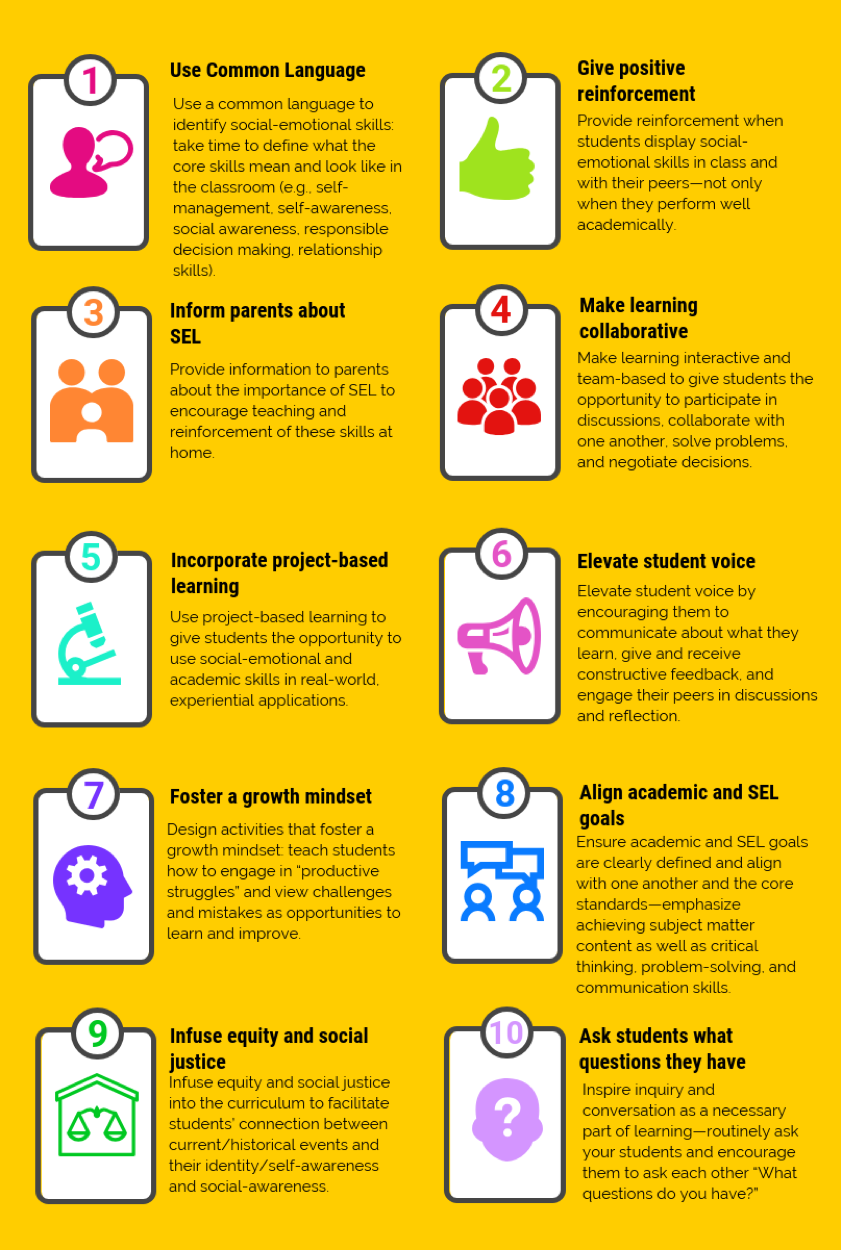Dr. Michelle Woodbridge (who has been studying prevention and intervention programs related to school-based mental health for more than 25 years) describes school-based clinicians’ perspectives on how using research-supported trauma-informed intervention programs in schools created meaningful, sustainable changes in practice. This video was produced by the 3C Institute. Helpful resources on cognitive behavior interventions can be … Continue reading Clinicians’ perspectives on implementing evidence-based practices
Dr. Carl Sumi, an expert in student behavioral research and interventions discusses positive behavior interventions and supports. This video was produced by the 3C Institute. Additional resources on cognitive behavior interventions can be found on the Cognitive Behavioral Intervention for Trauma in Schools (CBITS) program website. Resources for trauma-informed schools can be found on the Treatment … Continue reading How schools can get started with Positive Behavior Supports
In this video, Dr. Carl Sumi, an expert in student behavioral research and interventions, discusses the intersection between PBS and trauma informed schools. School-wide Positive Behavior Supports is a framework for operating schools and changing social culture and supporting all students. This video was produced by the 3C Institute. Additional resources on cognitive behavior interventions … Continue reading Why Positive Behavior Supports is a good fit for Trauma Informed Schools
Social-emotional learning (SEL) programs are more likely to be successful with all students when they are grounded in strategies that promote equity. Equity means ‘leveling the playing field’ and creating a culture where all students feel fully included, respected, represented, and valued. Here are a few strategies that start in the classroom. Content excerpted from … Continue reading Strategies for bringing an equity lens to SEL
Standalone SEL programs or curricula build students’ social-emotional skills separately from main instructional time. To implement standalone SEL programs, typically teachers or other qualified school staff members, such as counselors or school social workers, receive training in the curriculum and allot time during the school day to teach a series of lessons. Standalone SEL programs … Continue reading Criteria for selecting a social-emotional program
One approach to teaching social-emotional skills in the classroom is to integrate SEL into everyday academic instruction. Rather than teach social-emotional skills independently of academic skills, many teachers and administrators are trying to implement SEL throughout the school day. Here are several useful strategies identified in these resources that teachers can use to incorporate SEL … Continue reading Strategies for incorporating SEL into instruction
Acts of violence at school place pressure on educators and school leaders to better ensure the safety of their students. A comprehensive approach addresses school climate, student mental health programs, strategies to prevent violence, and physical security mechanisms. Our research has identified several promising practices to help keep students emotionally and physically safe at school.
We’ve identified 5 “T” strategies for states, districts, and schools to consider as their educators join the movement to promote and support student mental health: talking, training, teaching, tools, and taking care. Content excerpted from our blog post, How can we incorporate mental health education into schools? Consider the 5 T’s.
Given the ongoing debate about the value of screen time, many parents and educators are seeking research-supported best practices for using TV and videos to help support children’s learning and development. Look no further – we’ve summarized the research to give you 3 strategies for using videos to support SEL in children of any age


